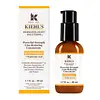What's inside
What's inside
 Key Ingredients
Key Ingredients

 Benefits
Benefits

 Concerns
Concerns

 Ingredients Side-by-side
Ingredients Side-by-side

Propylene Glycol
HumectantDimethicone
EmollientGlycerin
HumectantAscorbic Acid
AntioxidantEthylhexyl Palmitate
EmollientCetyl PEG/PPG-10/1 Dimethicone
EmulsifyingDimethicone Crosspolymer
Emulsion StabilisingAscorbyl Glucoside
AntioxidantCyclohexasiloxane
EmollientHydroxyethylpiperazine Ethane Sulfonic Acid
BufferingLauroyl Lysine
Skin ConditioningAcrylonitrile/Methyl Methacrylate/Vinylidene Chloride Copolymer
Polysilicone-11
Adenosine
Skin ConditioningHydrolyzed Hyaluronic Acid
HumectantLimonene
PerfumingIsobutane
Citrus Aurantium Dulcis Peel Oil
MaskingCitrus Limon Peel Oil
MaskingCitral
PerfumingPentaerythrityl Tetra-Di-T-Butyl Hydroxyhydrocinnamate
AntioxidantPropylene Glycol, Dimethicone, Glycerin, Ascorbic Acid, Ethylhexyl Palmitate, Cetyl PEG/PPG-10/1 Dimethicone, Dimethicone Crosspolymer, Ascorbyl Glucoside, Cyclohexasiloxane, Hydroxyethylpiperazine Ethane Sulfonic Acid, Lauroyl Lysine, Acrylonitrile/Methyl Methacrylate/Vinylidene Chloride Copolymer, Polysilicone-11, Adenosine, Hydrolyzed Hyaluronic Acid, Limonene, Isobutane, Citrus Aurantium Dulcis Peel Oil, Citrus Limon Peel Oil, Citral, Pentaerythrityl Tetra-Di-T-Butyl Hydroxyhydrocinnamate
Water
Skin ConditioningIsobutane
Propane
Perfluorohexane
SolventDimethicone
EmollientPropanediol
SolventIsosorbide Dicaprylate
Skin ConditioningTrimethylolpropane Tricaprylate/Tricaprate
EmollientEchinacea Purpurea Extract
MoisturisingPerfluorodecalin
Skin ConditioningPerfluoroperhydrophenanthrene
Skin ConditioningTropaeolum Majus Flower/Leaf/Stem Extract
Skin ConditioningZanthoxylum Bungeanum Fruit Extract
Skin ConditioningSodium Hyaluronate
HumectantHydrolyzed Hyaluronic Acid
HumectantSodium Polyglutamate
HumectantPolyglutamic Acid
Skin ConditioningAdenosine
Skin ConditioningChondrus Crispus Extract
Skin ConditioningGlycine Soja Seed Extract
Skin ConditioningHydrolyzed Vegetable Protein
Skin ConditioningTrehalose
HumectantOleyl Alcohol
EmollientGlycerin
Humectant1,2-Hexanediol
Skin ConditioningBetaine
HumectantPolysilicone-11
Lavandula Angustifolia Flower Oil
MaskingCetearyl Alcohol
EmollientGlyceryl Stearate
EmollientSodium Lauroyl Glutamate
Stearic Acid
CleansingAcrylates/C10-30 Alkyl Acrylate Crosspolymer
Emulsion StabilisingLaureth-12
EmulsifyingCaprylhydroxamic Acid
Sodium Benzoate
MaskingPotassium Sorbate
PreservativeGluconolactone
Skin ConditioningEthylhexylglycerin
Skin ConditioningSodium Hydroxide
BufferingPhenoxyethanol
PreservativeLinalool
PerfumingWater, Isobutane, Propane, Perfluorohexane, Dimethicone, Propanediol, Isosorbide Dicaprylate, Trimethylolpropane Tricaprylate/Tricaprate, Echinacea Purpurea Extract, Perfluorodecalin, Perfluoroperhydrophenanthrene, Tropaeolum Majus Flower/Leaf/Stem Extract, Zanthoxylum Bungeanum Fruit Extract, Sodium Hyaluronate, Hydrolyzed Hyaluronic Acid, Sodium Polyglutamate, Polyglutamic Acid, Adenosine, Chondrus Crispus Extract, Glycine Soja Seed Extract, Hydrolyzed Vegetable Protein, Trehalose, Oleyl Alcohol, Glycerin, 1,2-Hexanediol, Betaine, Polysilicone-11, Lavandula Angustifolia Flower Oil, Cetearyl Alcohol, Glyceryl Stearate, Sodium Lauroyl Glutamate, Stearic Acid, Acrylates/C10-30 Alkyl Acrylate Crosspolymer, Laureth-12, Caprylhydroxamic Acid, Sodium Benzoate, Potassium Sorbate, Gluconolactone, Ethylhexylglycerin, Sodium Hydroxide, Phenoxyethanol, Linalool
 Reviews
Reviews

Alternatives
Ingredients Explained
These ingredients are found in both products.
Ingredients higher up in an ingredient list are typically present in a larger amount.
Adenosine is in every living organism. It is one of four components in nucleic acids that helps store our DNA.
Adenosine has many benefits when used. These benefits include hydrating the skin, smoothing skin, and reducing wrinkles. Once applied, adenosine increases collagen production. It also helps with improving firmness and tissue repair.
Studies have found adenosine may also help with wound healing.
In skincare products, Adenosine is usually derived from yeast.
Learn more about AdenosineDimethicone is a type of synthetic silicone created from natural materials such as quartz.
What it does:
Dimethicone comes in different viscosities:
Depending on the viscosity, dimethicone has different properties.
Ingredients lists don't always show which type is used, so we recommend reaching out to the brand if you have questions about the viscosity.
This ingredient is unlikely to cause irritation because it does not get absorbed into skin. However, people with silicone allergies should be careful about using this ingredient.
Note: Dimethicone may contribute to pilling. This is because it is not oil or water soluble, so pilling may occur when layered with products. When mixed with heavy oils in a formula, the outcome is also quite greasy.
Learn more about DimethiconeGlycerin is already naturally found in your skin. It helps moisturize and protect your skin.
A study from 2016 found glycerin to be more effective as a humectant than AHAs and hyaluronic acid.
As a humectant, it helps the skin stay hydrated by pulling moisture to your skin. The low molecular weight of glycerin allows it to pull moisture into the deeper layers of your skin.
Hydrated skin improves your skin barrier; Your skin barrier helps protect against irritants and bacteria.
Glycerin has also been found to have antimicrobial and antiviral properties. Due to these properties, glycerin is often used in wound and burn treatments.
In cosmetics, glycerin is usually derived from plants such as soybean or palm. However, it can also be sourced from animals, such as tallow or animal fat.
This ingredient is organic, colorless, odorless, and non-toxic.
Glycerin is the name for this ingredient in American English. British English uses Glycerol/Glycerine.
Learn more about GlycerinHydrolyzed Hyaluronic Acid is a form of hyaluronic acid. It is created by the hydrolysis of hyaluronic acid with a high molecular weight. Once created, Hydrolyzed Hyaluronic Acid has a low molecular weight.
Low molecular weight HA has been shown to hydrate and increase elasticity of the skin. Increasing elasticity is also associated with reduction of wrinkle depth.
One study found topical low molecular weight hyaluronic acid may be considered for the treatment of rosacea in the adult population. However, we always recommend speaking with a professional about your skin concerns.
Hyaluronic acids are a humectant. This means they draw moisture from the air. Hyaluronic acids help moisturize, soothe, and protect the skin.
Read more about other common forms of hyaluronic acid:
Learn more about Hydrolyzed Hyaluronic AcidWe don't have a description for Isobutane yet.
Polysilicone-11 is a film-forming silicone that creates a non-tacky and matte finish on the skin. It's commonly used to improve texture, absorb excess oil, and help active ingredients spread evenly.
Due to its "rubber-like" structure, it stays on the skin's surface instead of being absorbed. On the skin, it creates a flexible layer that enhances wearability and stability.